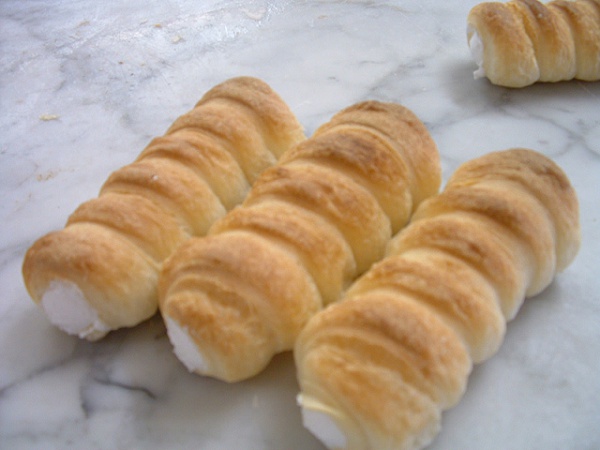Facts About Schaumrolle
Schaumrollen, also known as Schillerlocken, are exquisite Austrian pastries that have charmed many dessert lovers. These treats consist of cones or tubes made from puff pastry, typically filled with luxurious whipped cream or meringue. Often called foam rollers, these delectable pastries are approximately 3 inches in diameter and are crafted by wrapping thin strips of dough around a cone-shaped metal mold. Prior to baking, they are usually sprinkled with coarse or powdered sugar, adding an extra layer of sweetness.
The origin of Schaumrollen can be traced back to cream horns, introduced to North America by Mennonites from the Austro-Hungarian Empire. Immigrants from the Danube region also hold these pastries in high regard, and some varieties can extend up to five inches in length. Schaumrollen are a staple at major celebrations, including Christmas, weddings, and first communion ceremonies.
Nutritionally, Schaumrollen are quite indulgent. Each serving contains nearly 200 calories, with 46% of those calories derived from fats and 49% from carbohydrates.
The name Schillerlocken has an intriguing history. It originates from Anton Graff's renowned portrait of Friedrich Schiller, depicting the poet with his distinctive blonde curls. This portrait, housed in Dresden, became widely recognized and influenced the naming of the pastry. Interestingly, in Germany, the term Schillerlocken also refers to smoked dogfish belly flaps.

 Germany
Germany